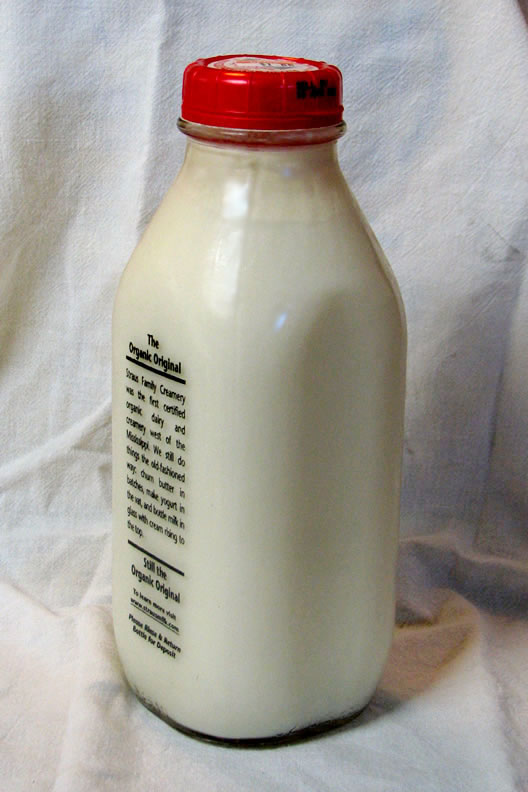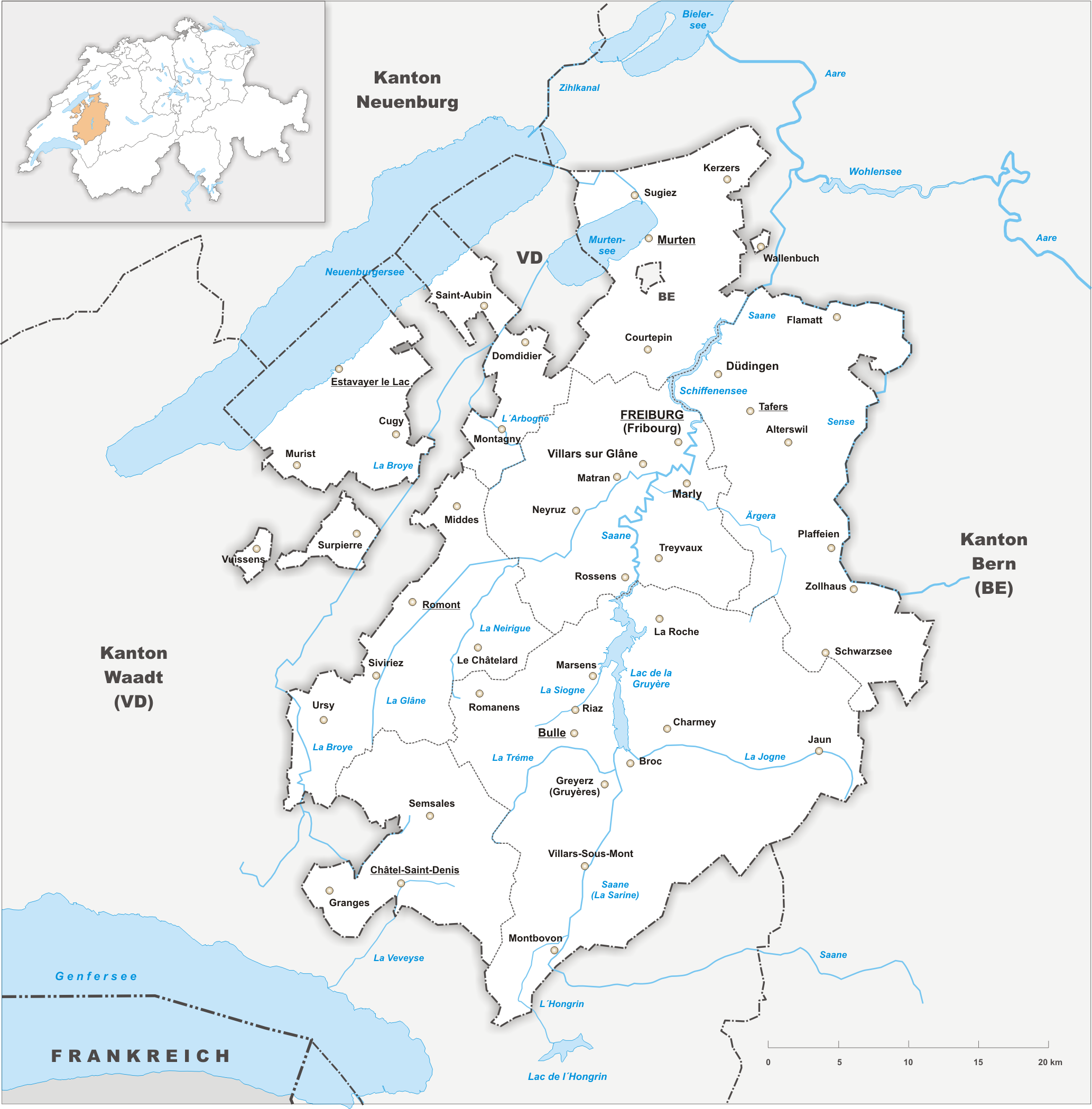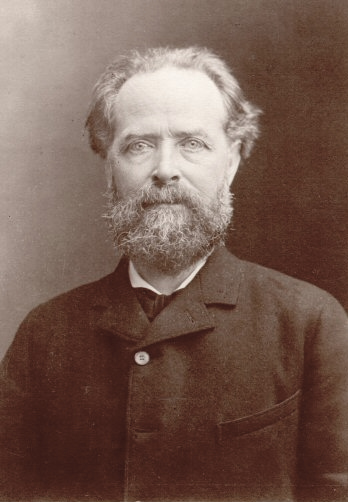|
Gruyère Cream
Gruyère cream () is a double cream produced in the canton of Fribourg. It is named after the region of Gruyères, from which it originates. In Switzerland, double cream must contain at least 45 percent fat. Gruyère cream contains about 50 percent, which gives it its thickness and smoothness. Gruyère cheese is notably produced in the same region since the 13th century. Cream production, however, is reputed since the 19th century only. Joseph Favre in particular, a cook from Valais, praised Gruyère cream as one of the finest in Europe, owing its great quality to that of the Alpine pastures. In the early 20th century, armaillis who went down to the village for mass, brought with them Gruyère cheese and Gruyère cream as an offering for the priest. Nowadays, in the canton of Fribourg, Gruyère cream is considered the quintessential cream and found in all dairies. When a person enters a dairy to ask for cream, he is spontaneously served double cream, without having to specify. Gru ... [...More Info...] [...Related Items...] OR: [Wikipedia] [Google] [Baidu] |
Double Cream
Cream is a dairy product composed of the higher-fat layer skimmed from the top of milk before homogenization. In un-homogenized milk, the fat, which is less dense, eventually rises to the top. In the industrial production of cream, this process is accelerated by using centrifuges called " separators". In many countries, it is sold in several grades depending on the total butterfat content. It can be dried to a powder for shipment to distant markets, and contains high levels of saturated fat. Cream skimmed from milk may be called "sweet cream" to distinguish it from cream skimmed from whey, a by-product of cheese-making. Whey cream has a lower fat content and tastes more salty, tangy, and "cheesy". In many countries partially fermented cream is also sold as: sour cream, crème fraîche, and so on. Both forms have many culinary uses in both sweet and savoury dishes. Cream produced by cattle (particularly Jersey cattle) grazing on natural pasture often contains some fat-soluble c ... [...More Info...] [...Related Items...] OR: [Wikipedia] [Google] [Baidu] |
Canton Of Fribourg
The canton of Fribourg, also canton of Freiburg, is located in western Switzerland. The canton is bilingual, with French spoken by more than two thirds of the citizens and German by a little more than a quarter. Both are official languages in the canton. The canton takes its name from its capital city of Fribourg. History On the shores of Lake Neuchâtel and Lake Morat significant traces of prehistoric settlements have been unearthed. The canton of Fribourg joined the Swiss Confederation in 1481. The area is made up of lands acquired by the capital Fribourg. The present extent was reached in 1803 when Murten (Morat) was acquired. The canton of Fribourg joined the separatist league of Catholic cantons in 1846 ( Sonderbund). The following year, its troops surrendered to the federal army. Geography The canton is bounded to the west by Lake Neuchâtel, to the west and the south by the canton of Vaud, and to the east by the canton of Bern. The canton includes two enclaves with ... [...More Info...] [...Related Items...] OR: [Wikipedia] [Google] [Baidu] |
Gruyères
Gruyères (; ; Fribourgeois: ''Grevire''; ) is a town in the district of Gruyère (district), Gruyère in the Cantons of Switzerland, canton of Canton of Fribourg, Fribourg, Switzerland. The medieval town is an important tourist location in the upper valley of the Saane/Sarine river, and gives its name to Gruyère cheese. The medieval town is located at the top of an hill overlooking the Saane valley and the Lake of Gruyère. Geography Gruyères has an area, , of . Of this area, or 40.5% is used for agricultural purposes, while or 50.0% is forested. Of the rest of the land, or 5.5% is settled (buildings or roads), or 0.8% is either rivers or lakes and or 3.2% is unproductive land.Swiss Federal Statistical Office-Land Use Statistics 2009 data accessed 2 ... [...More Info...] [...Related Items...] OR: [Wikipedia] [Google] [Baidu] |
Switzerland
Switzerland, officially the Swiss Confederation, is a landlocked country located in west-central Europe. It is bordered by Italy to the south, France to the west, Germany to the north, and Austria and Liechtenstein to the east. Switzerland is geographically divided among the Swiss Plateau, the Swiss Alps, Alps and the Jura Mountains, Jura; the Alps occupy the greater part of the territory, whereas most of the country's Demographics of Switzerland, 9 million people are concentrated on the plateau, which hosts List of cities in Switzerland, its largest cities and economic centres, including Zurich, Geneva, and Lausanne. Switzerland is a federal republic composed of Cantons of Switzerland, 26 cantons, with federal authorities based in Bern. It has four main linguistic and cultural regions: German, French, Italian and Romansh language, Romansh. Although most Swiss are German-speaking, national identity is fairly cohesive, being rooted in a common historical background, shared ... [...More Info...] [...Related Items...] OR: [Wikipedia] [Google] [Baidu] |
Culinary Heritage Of Switzerland
The Culinary Heritage of Switzerland (, , , ) is a multilingual online encyclopedia of traditional Swiss cuisine and produce In American English, produce generally refers to wikt:fresh, fresh List of culinary fruits, fruits and Vegetable, vegetables intended to be Eating, eaten by humans, although other food products such as Dairy product, dairy products or Nut (foo .... History The project was initiated after Swiss MP Josef Zisyadis's parliamentary motion in 2000. After obtaining CHF 2 million of funding by the Swiss federal government, the Swiss cantons and private sponsors, the private association "Culinary Heritage of Switzerland" was founded in 2003. The association hired a team of researchers, including ethnologists and historians, to write the articles and carry out field research by interviewing Swiss bakers, butchers, cultural historians, archivists and farmer's wives. It made the encyclopedia, with an initial scope of some 400 articles, available to the public ... [...More Info...] [...Related Items...] OR: [Wikipedia] [Google] [Baidu] |
Gruyère Cheese
Gruyère (, , ; , ) is a hard Swiss cheeses and dairy products, Swiss cheese that originated in the cantons of Canton of Fribourg, Fribourg, Vaud, Canton of Neuchâtel, Neuchâtel, Canton of Jura, Jura, and Canton of Bern, Berne in Switzerland. It is named after the town of Gruyères in Fribourg. In 2001, Gruyère gained the (AOC), which became the (AOP) as of 2013. Gruyère is classified as a Swiss-type cheeses, Swiss-type or Alpine cheese and is sweet but slightly salty, with a flavour that varies widely with age. It is often described as creamy and nutty when young, becoming more assertive, earthy, and complex as it matures. When fully aged (five months to a year), it tends to have small cracks that impart a slightly grainy texture. Unlike Emmental cheese, Emmental, with which it is often confused, modern Gruyère has few if any Eyes (cheese), eyes, although in the 19th century, this was not always the case. The small cracks that can develop in Gruyère cheese are often ref ... [...More Info...] [...Related Items...] OR: [Wikipedia] [Google] [Baidu] |
Joseph Favre
Joseph Favre (; 17 February 1849 – 17 February 1903) was a Swiss chef who worked in Switzerland, France, Germany, and England. Although he initially only received primary education because of his humble origins, as an adult he attended science and nutrition classes at the University of Geneva, and eventually published his four-volume , an encyclopedia of culinary science, in 1895. As a young man, he enlisted in Giuseppe Garibaldi's army during the Franco-Prussian War and became an anarchist and a member of the International Workingmen's Association (IWA), also known as the First International. He founded and wrote for various left-wing journals and a magazine for chefs, and also sponsored cooking competitions and exhibitions and launched a chefs' trade union. He would come to favour a more moderate socialism and, like other members of the IWA in Switzerland, eventually rejected anarchism, though he remained active in radical politics. The Félix Dupanloup, Bishop of Orléans ... [...More Info...] [...Related Items...] OR: [Wikipedia] [Google] [Baidu] |
Meringue
Meringue ( , ) is a type of dessert or candy, of French cuisine, French origin, traditionally made from Whisk, whipped egg whites and sugar, and occasionally an acid, acidic ingredient such as lemon, vinegar, or potassium bitartrate, cream of tartar. A binding agent such as salt, flour or gelatin may also be added to the eggs. The key to the formation of a good meringue is the formation of wikt:stiff peaks, stiff peaks by Denaturation (biochemistry), denaturing the protein ovalbumin (a protein in the egg whites) via mechanical shear. They are light, airy, and sweet confections. Homemade meringues are often chewy and soft with a crisp exterior, while many commercial meringues are crisp throughout. A uniform crisp texture may be achieved at home by baking at a low temperature () for an extended period of up to two hours. History The ''Oxford English Dictionary'' states that the French word is of unknown origin. The name ''meringue'' for this confection first appeared in print in ... [...More Info...] [...Related Items...] OR: [Wikipedia] [Google] [Baidu] |
Swiss Confederation
Switzerland, officially the Swiss Confederation, is a landlocked country located in west-central Europe. It is bordered by Italy to the south, France to the west, Germany to the north, and Austria and Liechtenstein to the east. Switzerland is geographically divided among the Swiss Plateau, the Alps and the Jura; the Alps occupy the greater part of the territory, whereas most of the country's 9 million people are concentrated on the plateau, which hosts its largest cities and economic centres, including Zurich, Geneva, and Lausanne. Switzerland is a federal republic composed of 26 cantons, with federal authorities based in Bern. It has four main linguistic and cultural regions: German, French, Italian and Romansh. Although most Swiss are German-speaking, national identity is fairly cohesive, being rooted in a common historical background, shared values such as federalism and direct democracy, and Alpine symbolism. Swiss identity transcends language, ethnicity, and r ... [...More Info...] [...Related Items...] OR: [Wikipedia] [Google] [Baidu] |
Swiss Cheeses And Dairy Products
Switzerland has a strong and ancestral dairy farming and cheesemaking tradition. The breeding of cattle, sheep and goats for milk is attested in the Neolithic period and, since Antiquity, cheese has been exported from the Alpine regions. The rugged nature of the country makes approximately 80% of the agricultural land unsuitable for cultivation, which is therefore mainly exploited for cattle and sheep farming. This mode of exploitation has forged a large part of the Swiss landscape, in the Alps, the Jura and on the Swiss Plateau. Today, cheese dairies and mountain pastures in Switzerland produce nearly 500 varieties of cheese, not counting fresh cheeses. Most of these, and all the ones very well known internationally, are semi-hard Alpine or Swiss-type cheeses such as Emmental and Gruyère. Dairy products in general are highly appreciated throughout the country, with butter and cream being classic ingredients of Swiss cuisine. History The breeding of cattle, sheep and goats ... [...More Info...] [...Related Items...] OR: [Wikipedia] [Google] [Baidu] |
Swiss Cuisine
Swiss cuisine (, , , ) is an ensemble of national, regional and local dishes, consisting of the ingredients, recipes and List of cooking techniques, cooking techniques developed in Switzerland or assimilated from other cultures, particularly neighboring countries. The diversity and comprehensiveness of Swiss gastronomy reflects the Languages of Switzerland, linguistic, Culture of Switzerland, cultural and Geography of Switzerland, geographical diversity. The climate of Switzerland allows for a large variety of terroirs, and therefore a wide range of indigenous food from refined products like bread and wine. Typical ingredients include Dairy product, dairy(especially cheese and milk), Potato, potatoes, Grain, grains and Root vegetable, root vegetables, which feature prominently in traditional Alpine cuisine, Alpine recipes and cuisines. Switzerland is historically an Agriculture in Switzerland, agricultural country, with many regions being isolated from each other by the Alps. Th ... [...More Info...] [...Related Items...] OR: [Wikipedia] [Google] [Baidu] |






